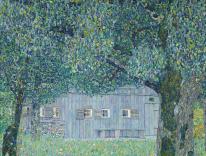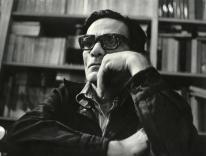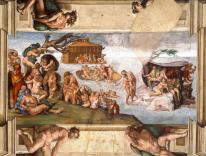Fifty-eight Stations of the Cross is what you might call Georges Rouault’s powerful series of etchings, Miserere et Guerre, on view through May 28 at the Museum of Biblical Art near New York’s Lincoln Center. The exhibit, which hopes to travel to other cities, constitutes the first major showing of Rouault in the United States in more than forty years. As the work’s title indicates (Miserere, from the first line of Psalm 51, “Have mercy, Lord”; and Guerre, “war”) the subject matter is timely.
Rouault’s large, black-and-white etchings (roughly twenty-five by nineteen inches) combine a strong sense of human suffering and Catholic iconography with a masterly technique. Rouault (1871–1958) worked and reworked the etchings between 1912–18 and 1922–27 (the series was not published until 1948), and they constitute a powerful meditation on war, poverty, human venality, and redemption.
Rouault was the son of a cabinetmaker. Before attending the École des Beaux-Arts in Paris (as a fellow student with Henri Matisse) he apprenticed in stained glass. His characteristic dark slashes are reminiscent of the leading in gothic windows, which themselves allow for the light. In 1903, Rouault was introduced to the Catholic writer Léon Bloy, whose Christian social consciousness played an important role in Rouault’s subsequent work. Rouault often chose as subjects those who suffered dereliction on society’s margins. His friend Jacques Maritain wrote that “all the usual canons of beauty are shattered” in Rouault’s art, and that Rouault “seemed committed to becoming the painter of original sin and of the misery of wounded humanity.”
Miserere et Guerre bears witness to Maritain’s insight. Each of life’s deadening sins is depicted with unblinking frankness. Yet the starkness is relieved by a sense of inner warmth, conveyed not only in some of the subject matter (a blinding sunrise, a priest hearing a confession), but by the richly burnished quality of Rouault’s technique: “I reworked these plates again and again,” he said, “sometimes making as many as twelve successive states” to reach the desired depth of tone, light, and shadow.
In our time, as war and environmental upheaval are plastered across the front pages, Rouault’s images of bombed-out landscapes, of bourgeois insouciance and military bravado, of spiritual ennui, provoke a bald question: Have we learned nothing from the suffering of so many? The answer on view in Miserere et Guerre would seem to be: Far too little.
Despite the gravity and starkness of Rouault’s etchings, anyone willing to look will discover wells of light that resist the darkness. The artist incorporates the image of Veronica’s veil throughout the series, as a reminder that any act of human kindness bears the hidden image of God’s presence.
There is a seriousness in Rouault’s work that can stop you in your tracks, and ought to. His Miserere et Guerre is one of the most profound artistic representations of Christ’s redemptive suffering in modern times. It commands both meditation and wonder.
Related: Unmasked: Georges Rouault at Boston College, by Leo J. O'Donovan
Please email comments to [email protected] and join the conversation on our Facebook page.
Share
Previous Story
Judas, Da Vinci & Us
Next Story
The Boy Problem


